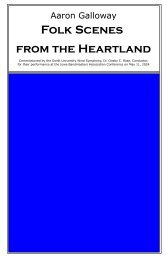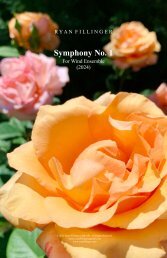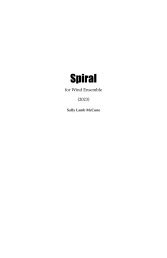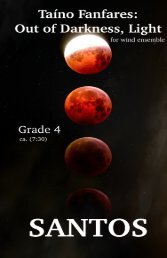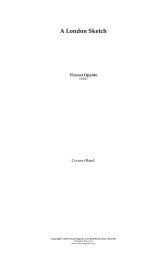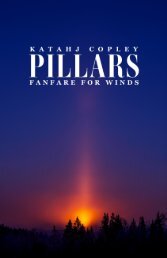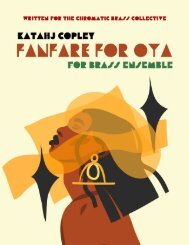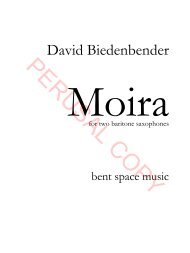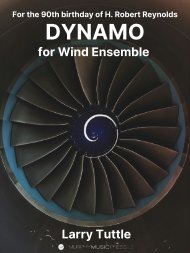Create successful ePaper yourself
Turn your PDF publications into a flip-book with our unique Google optimized e-Paper software.
7 P E R F O R M A N C E N O T E S 7<br />
Children’s Folksong Suite is based on five Hungarian folk melodies with a simple, child-like<br />
character that have been culled from sources published between 1813 and 1896. The five<br />
melodies are also found in a collection of Hungarian and Slovakian folk melodies in Béla Bartók’s<br />
piano collection entitled For Children. As with Bartók’s Mikrokosmos and his forty-four Violin<br />
Duets, For Children is an expression of Bartók’s interest in composing accessible works for<br />
young musicians that introduces them to contemporary harmonic resources rarely encountered<br />
at the beginning level. Similarly, the five folk melodies set in Children’s Folksong Suite have<br />
been completely re-harmonized and, in some instances, expanded. Although not bound by<br />
common-practice theoretical expectations, Children’s Folksong Suite preserves each piece’s<br />
unique, child-like character.<br />
Children's Folksong Suite is dedicated to the members of the Leslie Middle School band<br />
(Salem, Oregon) and their conductor Mr. Danh Pham, who commissioned the work.<br />
7 R E H E A R S A L N O T E S 7<br />
In general<br />
The work was composed with 3 optional mallet percussion parts (listed as percussion 4-6). These<br />
percussion parts are not required to perform the work and should only be utilized once the<br />
timpani and percussion parts 1-3 have been covered.<br />
Performances need not include all 5 movements. In the case that the complete work is not<br />
performed, conductors should feel free to present the selected movements in an order that<br />
makes musical sense for the program. The overall timing is approximately 8' 35" with the<br />
breakdown of each movement as follows:<br />
I. 1 25<br />
II. 2 35<br />
III. 1 15<br />
IV. 1 50<br />
V. 1 30<br />
The tenor clef used in the trombone part is only found in the score so as to facilitate notation<br />
and avoid collisions with staves immediately above it. The trombone parts, however, are notated<br />
in bass clef throughout.



